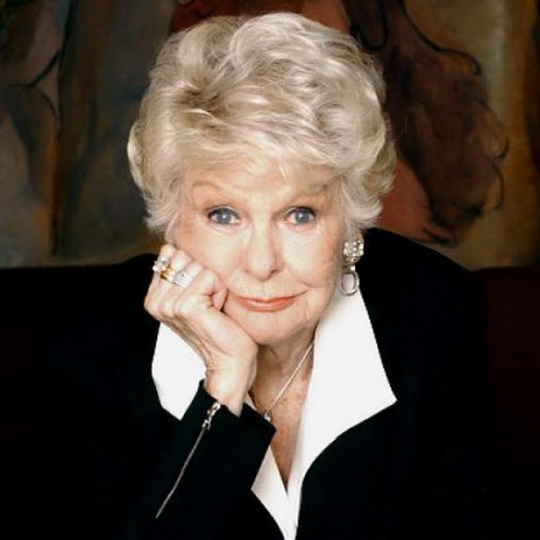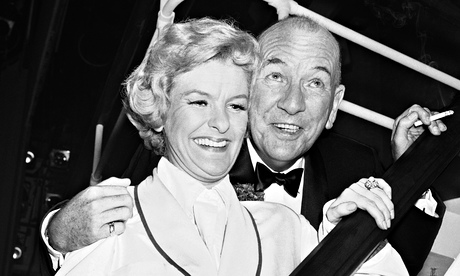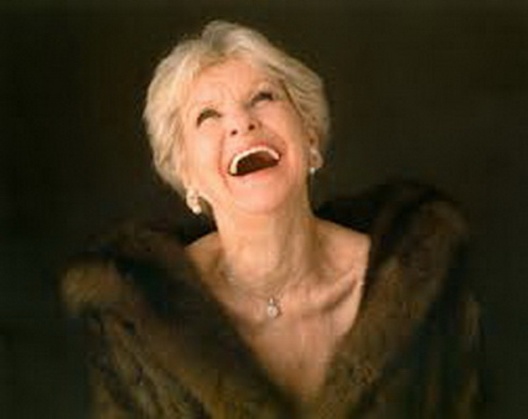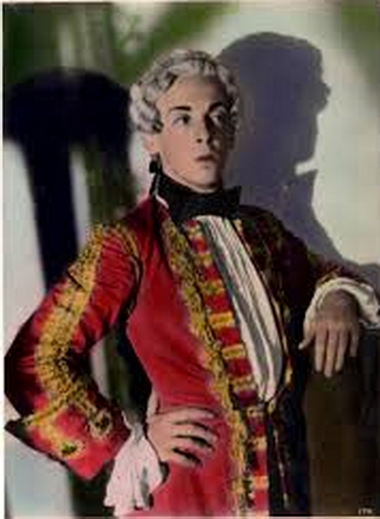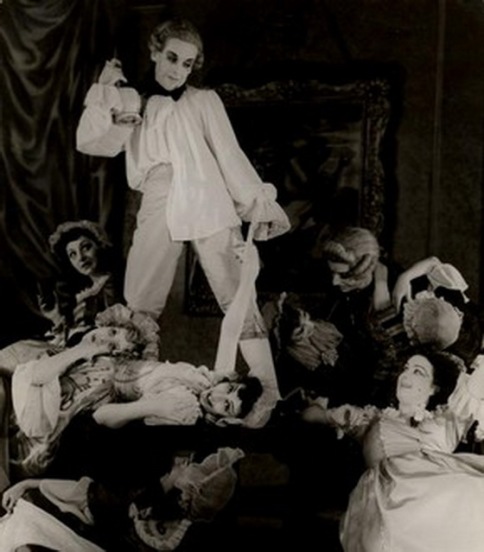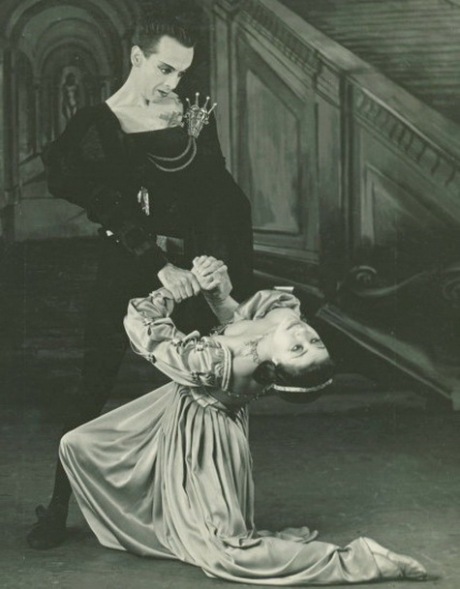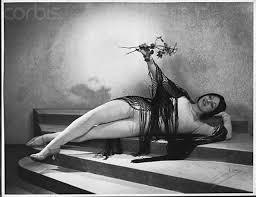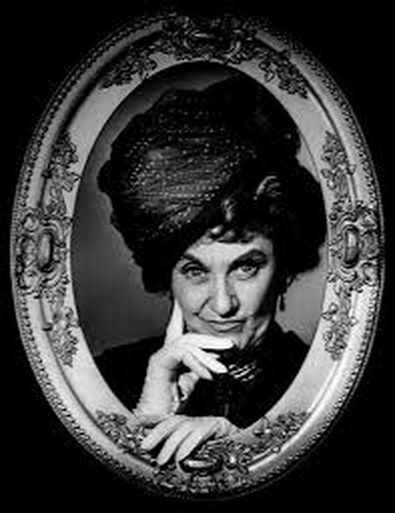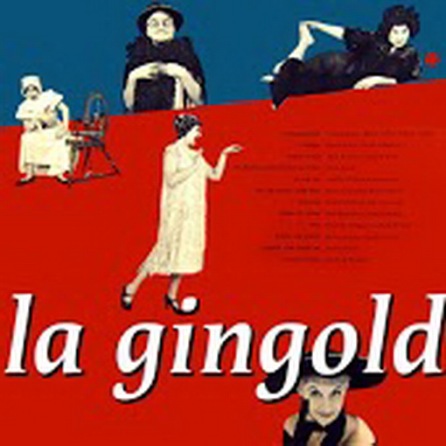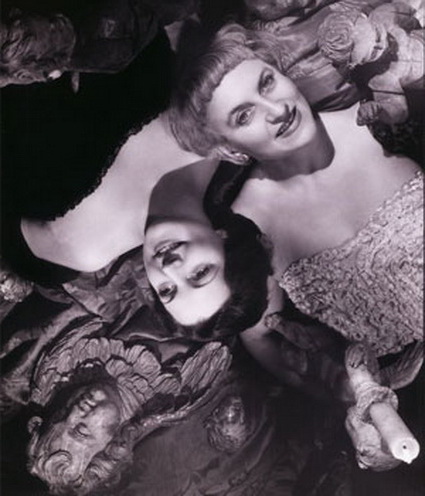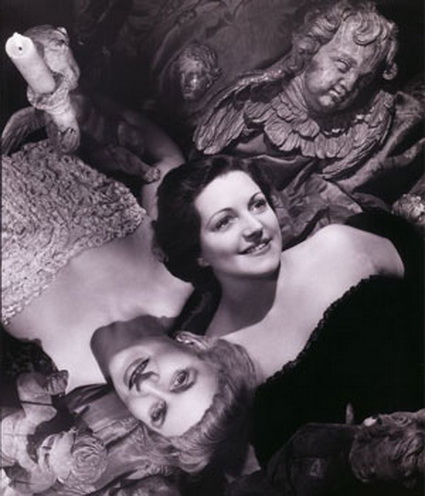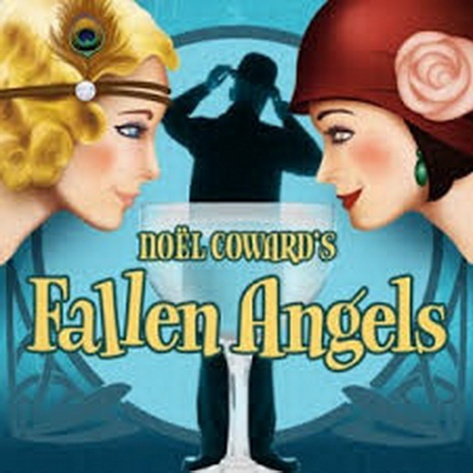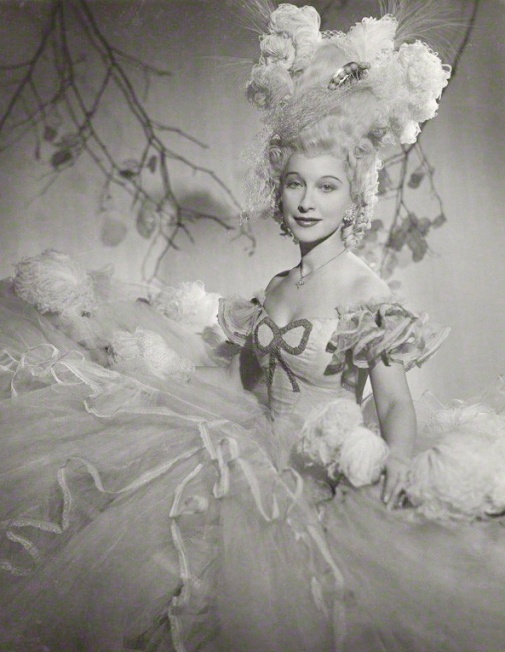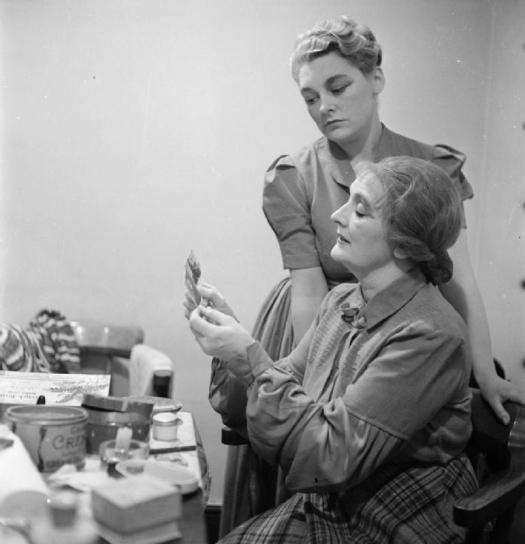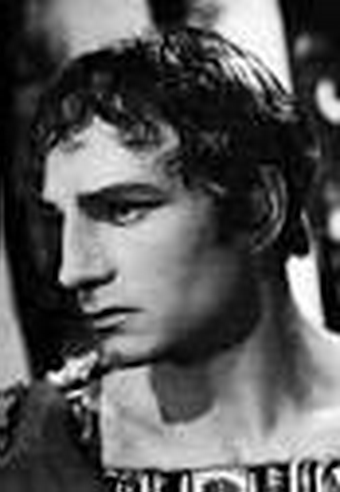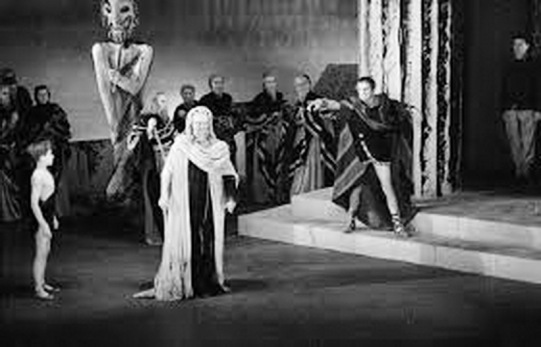SHE WAS ODDLY BEAUTIFUL
ELAINE STRITCH
1925 – 2014
ELAINE STRITCH hit the Broadway lights in 1946 and has since been the toast of Broadway and the West End.
Albert Einstein once said, “Never memorize something that you can look up.” So I’ve done just that; half of what I am now writing is from memory past and the rest I’ve just looked up!
Elaine Stritch sings “Some Day My Prince Will Come.” Her unique singing voice was once affectionately compared to a car shifting gears without the clutch.
I was saddened by the news of the death of Elaine Stritch, a performer par excellence; and it brought back the memory of when I first saw her on stage in “The Time of the Barracudas” at the Curran Theatre in San Francisco in 1963. This was prior to its opening in Los Angeles and then onto New York. (Which, as fate would have it, never happened).
I hadn’t a clue who she was, the only name that meant anything to me was Laurence Harvey, her co-star, who I knew from London when I was 20. So I went to see the show with Ray and my cousin Adrienne, who happened to live in San Francisco.
I was looking forward to seeing the play because I hadn’t seen Larry for many years and now of course he was a big star. We had met originally at Roehampton Swimming Pool when he asked me whether he could take a shower with me? Enough said!
I used to go to Roehampton with my girl friend Pamela Bevan, who was in ‘Diamond Lil’ at the time, and so we became and stayed friends with Larry up until the time he was with Hermione Baddeley when she was performing in cabaret at Ciro’s Club, a chic nightclub in Leicester Square. He was introducing her act and doing the odd sketch with her. He was also living with her and ‘schtuping’ her at the same time. She was twice his age. As I said before, she liked young men.
Laurence Harvey was on his way up and I was still just a poor actor working in the West End and getting ready to do the No.1 tour of “Tobacco Road” playing Dude the lunatic son. Somehow I could never get away from playing lunatics! Do you think it was in my genes?
We met at the ‘White Room,’ a drinking club in Denman Street. W.1. for drinks and a chat. He introduced me to Hermione Baddeley, who I was thrilled to meet, and we talked about various things that we were doing; and that was last I saw of him!
Much later, I think it was in the early 70s in Los Angele, Ray and I were having dinner with Hermione Baddeley and Lady Mary (I haven’t a clue what her other name was). Avery Van Arthur and his mother Miss Dodie were our hosts. After looking at the menu, Hermione said, ”I think I shall risk the halibut. It can’t be too awful, can it? After you’ve lived with Laurence Harvey, nothing in life is ever really too awful again.” That’s enough said about Hermione Baddeley!
Elaine Stritch
The play “The Time of the Barracudas” was marvellous and Elaine Stritch was mind blowing. She had such comedy and such talent and looked so wonderful. As for Laurence Harvey he was really awful, his performance was a nothing!
One of the critics said in his review of the play;
‘The director has decided to direct most of the play with Elaine Stitch having to have her back to the audience. I can tell you that this critic would rather look at Elaine Stritch’s back than Laurence Harvey’s front!’
After a notice like that, what could she do? The leading lady quit and her complaint was her co-star. “If I told you some of the things that son of a bitch has done to me, you wouldn’t believe it!” she said. “This play has been the most horrible experience of my life.” Of course, Laurence Harvey hadn’t a kind word to say about Elaine.
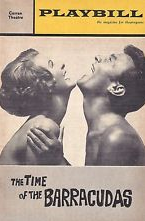
Elaine Stritch and Laurence Harvey
After walking out of “The Time of the Barracudas,” she tended bar for five months. Seven years later, she was nominated for a Tony for Company. “I’d just as soon not be nominated for awards,” she once said. “I want to win. If you can’t let me win, don’t nominate me.”
Elaine was not the only person to regret working with Laurence Harvey. Jane Fonda said, “Acting with Harvey is like acting with yourself, only worse!” Lee Remick similarly regretted working with him, “The tales I can tell of working with him are too horrendous to repeat!” And so it went on.
Frank Sinatra’s nickname for Laurence Harvey, according to his valet George Jacobs, was “Ladyboy.” It was well known in the business that James Woolf, who co-owned Romulus Films with his brother Sir John Woolf, was in love with Harvey. He had put his protégé into film after film, all of which had flopped, until he bought the film rights to John Braine’s bestseller Room at the Top, contracted the great Simone Signoret to play opposite Harvey, and finally made his lover a star. But Harvey kept marrying to further his career. Larry’s whoredom was so blatant it was disarming. After living with Hermione Baddeley, he married Margaret Leighton who was six years his senior. When that marriage finished he married Joan Cohn, the widow of Harry Cohen, the managing director of Columbia Studios. Throughout all of these career marriages, he still strung Jimmy Woolf along. Noel Coward once commented on Harvey’s unhappy marriage to actress Margaret Leighton; “It really isn’t surprising that homosexuality is becoming as normal as blueberry pie”
Elaine Stritch and Noel Coward
In 1971, the film critic Alexander Walker wrote about James Woolf:
“He was a rarity in British Films at the time, and would still be so if he were alive today; a man of taste and judgement who loved craftsmanship and supported a director instead of suffocating him or using him as a surrogate talent for the film he himself would have liked to direct had he dared. He was an obsessional filmmaker, loving the wheeling and dealing, relishing the juggling with human talents that it involved, and taking pleasure in spotting youthful ‘proteges’ and promoting their careers, thereby gaining a vicarious satisfaction from their success that was lacking in his own basically lonely nature. James Woolf was gay and the lover of Laurence Harvey.”
I may lose the plot sometimes and wander off in a tangent as a name crops up and I remember an amusing story. Please forgive me dear reader, but I shall always return to the plot sooner or later.
Under the headline “Actress Elaine Stritch, ‘Her Own Greatest Character,’ Dies At 89,” National Public Radio journalist Elizabeth Blair wrote, “Elaine Stritch — one of Broadway’s boldest and brassiest performers — has died. With that gravelly voice — and those long legs — and the utter command of the stage, Stritch was a bona fide Broadway star. Not as a classic leading lady, necessarily, but as the hardened-yet-vulnerable performer audiences couldn’t forget. Stritch died of natural causes Thursday morning at her home in Birmingham, Mich. She was 89.”
In an interview with Stritch in March 2014, National Public Radio’s Scott Simon observed that the stage and screen legend “may be her own greatest character.”
In a career that stretched back to the 1940s, Stritch did it all: theater, TV, movies. She was nominated for several Tony Awards and won three Emmys. She starred in the 1961 Noel Coward musical Sail Away and the 1970 Stephen Sondheim musical Company. (With her performance of “Ladies Who Lunch,” Sondheim said, Stritch turned what he thought was “just a simple saloon song” into a “piece of theater.”)
Stritch was born in Detroit, where her father was a rubber company executive. She was raised Roman Catholic and when she first moved to New York City, she went to a finishing school at the Convent of the Sacred Heart. Years later, Broadway producer Hal Prince said Stritch had “the guts of a jailbird” but “the convent girl is still there.”
It’s been said that Stritch could always play older than she really was. She was 20 when she sang Zip in Pal Joey, but Stritch herself said she looked 40. She had a terrific sense of humour about her looks — and her age. In 1988, Stritch told National Public Radio’s Susan Stamberg that she didn’t mind the word “aging” at all.
“It applies to everyone,” she said. “I saw a kid 16 on the street and he was aging. We’re all aging but somehow the press loves to say it when you’re over 40.”
Stritch was candid about everything — her age, her alcoholism, her diabetes. In her book Am I Blue?: Living with Diabetes and, Dammit, Having Fun! she wrote about being diagnosed with the disease at the peak of her career.
“More than with any other condition I know of,” she wrote, “the diabetic simply has to understand the nature of the illness and become intimately involved in treating it.” But with her trademark wit she also said: “Diabetes is great because I can say, ‘My blood sugar is off. I have to go.’ “
In 2002, when she was in her late 70s, she launched a Tony Award-winning, one-woman show called Elaine Stritch at Liberty. She continued performing well into her 80s. In 2008 Stritch won an Emmy — her third — for her role as character Jack Donaghy’s mother on NBC’s 30 Rock.
Stritch once said, “I just pray that I can be at least amusing.”
And was she ever.
Tina Fey said of Elaine Stritch, “Elaine was a ‘tough old bird,’ but I suspect she may have been a ‘tough old bird’ since birth, I loved her voice, her timing, her stories and her natural elegance.”
“One day she was wearing a beautiful butterfly cocktail ring, and when I admired it, she gave it to me on the spot – like an Arab sheik in black pantyhose. I feel very lucky to have worked with her as much as I did.”
Tina Fey, Elaine Stritch and Alec Baldwin
Alec Baldwin said, “ She was just the funniest damn woman you’d ever met in your lives. So, there you have it!” Baldwin, meanwhile, took to Twitter Thursday to remember Stritch – and hinted that things in heaven are about to get a whole lot more interesting. “I’m sure that even God is a bit nervous right now,” he wrote. “I love you, Elaine.”
Alec Baldwin on his friendship with Elaine Stritch: “No one was funnier and had better timing than Elaine. I just sent Tina [Fey] an email yesterday saying I’ll always be grateful to you for casting Elaine as my mom, because she would walk in there and we just had to stand back and get out of her way and the rest of it would take care of itself.”

Performing Arts Elaine Stritch was an American actress and singer who had a net worth of $20 million dollars. Elaine Stritch was born in Detroit, Michigan, and went on to study theater at New School University. Some of her classmates at the theater school included future acting legends Marlon Brando and Bea Arthur. She made her professional acting debut on stage in the mid-1940s, and then made her Broadway debut in the 1946 production of “Loco”. She went on to appear in multiple Broadway and National touring productions, including “Call Me Madam”, “Pal Joey”, “Sail Away”, and “Company”. She began her film and television career in the late 1940s, and went on to appear in such projects as “The Scarlet Hour”, “A Farewell to Arms”, “The Spiral Staircase”, “Cadillac Man”, “Screwed”, “Autumn in New York”, and “Monster-in-Law”. She has been nominated for multiple awards, including five Tony Awards. She won one for her one-woman show, “Elaine Stritch at Liberty”. She has also been nominated for eight Emmy Awards, and has won three. To younger audiences, Elaine Stritch is probably most widely recognized for her Emmy-award winning recurring role as Jack Donaghy’s mother Colleen on the NBC sitcom “30 Rock”. Elaine died on July 17, 2014 at the age of 89
Now we see how At Liberty, the amazing one-woman show Stritch is moving to Broadway from the Public Theater this week, acquired the credit, “Constructed by John Lahr. Reconstructed by Elaine Stritch”. “The reconstruction means I had the last say”, she says. “Damn right I did.” … In case you didn’t notice, Stritch is not the kind of woman who goes in for the sappy self-indulgence that pollutes most one-person shows. In fact, At Liberty is in a class by itself, a biting, hilarious and even touching tour-de-force tour of Stritch’s career and life. Almost every nook and cranny of “At Liberty” holds a surprise. Turns out she dated Marlon Brando, Gig Young and Ben Gazzara, though she dropped Ben when Rock Hudson showed an interest in her. “And we all know what a bum decision that turned out to be”, she says. And then there were the shows. A British writer recently called Stritch “Broadway’s last first lady”, and when you see her performing her signature numbers from Company and Pal Joey and hear her tell tales of working with Merman, Coward, Gloria Swanson and the rest, it’s hard to argue. Especially since she does it all dressed in a long white shirt and form-fitting black tights. It’s both a metaphor for her soul-baring musical and a sartorial kiss-my-rear gesture to anyone who thinks there isn’t some life left in the 76-year-old diva. “Somebody said to me the other day, ‘Is this the last thing you’re going to do?'”, says Stritch. “In your dreams! I can’t wait to get back into an Yves Saint Laurent costume that isn’t mine – but will be when the show is over.”
In recent years, Stritch performed a regular cabaret act at New York’s Carlyle Hotel, where she was a longtime resident. The actress returned to live in her native Michigan in 2013, citing her health. Elaine died on July 17, 2014 at the age of 89.
Elaine Stritch An Appreciation
by David Rooney
The Hollywood Reporter’s leading Theatre Critic pays personal tribute to the legendary Broadway performer, whose exacting professional standards were as renowned as her tart tongue and eccentric style. Across the New York Theatre District, marquees will dim their lights on Friday evening in honour of one of the all-time greatest brassy broads of Broadway, Elaine Stritch. But a more fitting remembrance might be for the Theatre Lovers to take to the streets and accompany that symbolic ritual with the final roar of the Stephen Sondheim song most indelibly associated with the beloved performer, who died on Thursday at her home in Birmingham, Michigan, at 89.
Broadway to dim it’s lights in honour of Elaine Stritch.
